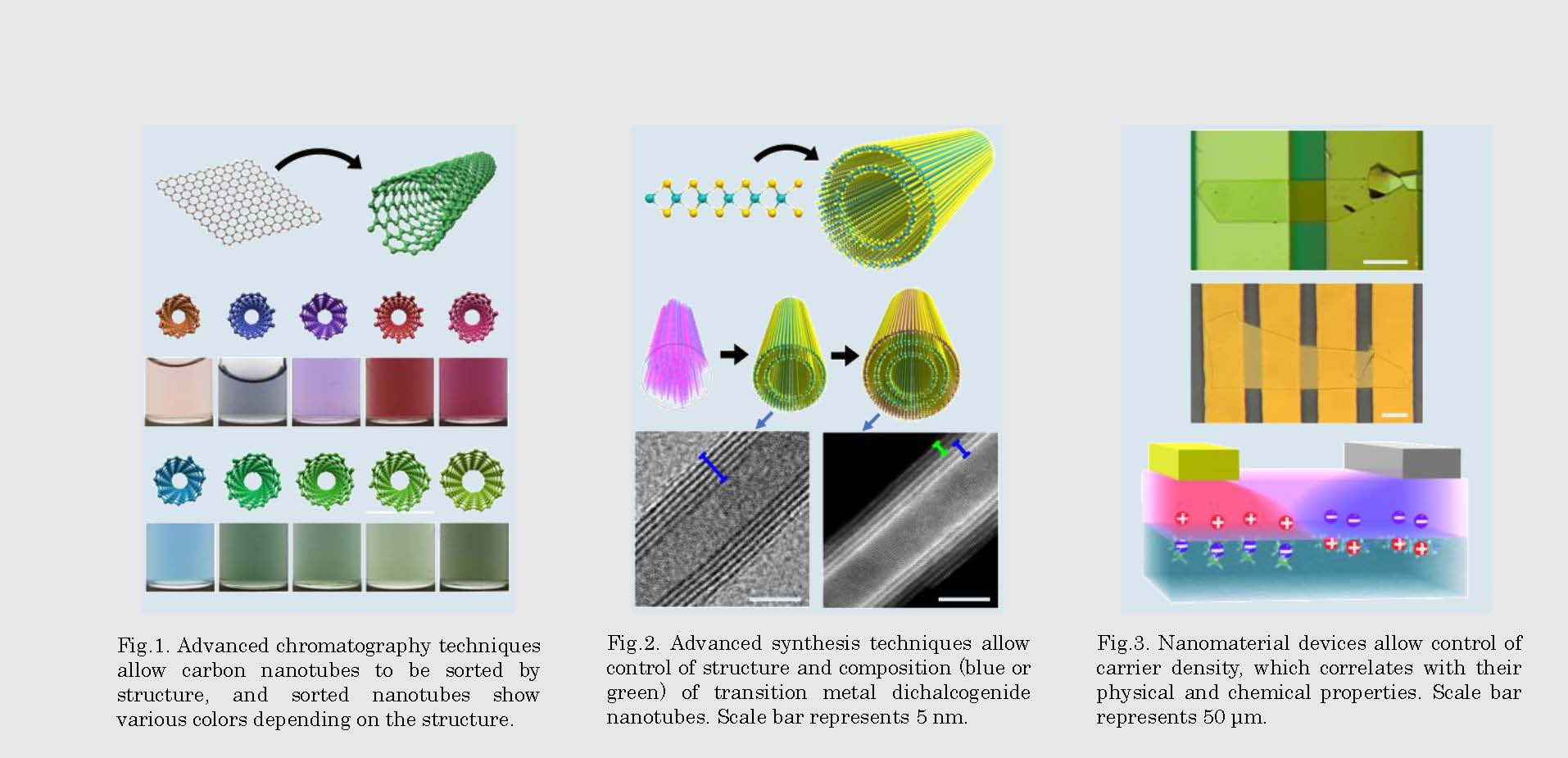
RIES
Research Institute for Electronic Science, Hokkaido University
北海道大学
電子科学研究所

LAST UPDATE 2024/08/19
-
研究者氏名
Researcher Name蓬田陽平 Yohei YOMOGIDA
准教授 Associate Professor -
所属
Affiliation北海道大学 電子科学研究所
物質科学研究部門 インタラクション機能材料研究分野
Research Institute for Electronic Science, Hokkaido University
Laboratory of Interactive Functional Materials, Material and Molecular Sciences -
研究キーワード
Research Keywordsナノチューブ
キラリティ
構造制御
デバイス
Nanotubes
Chirality
Structure control
Devices
- 研究テーマ
Research Subject -
構造・組成が制御されたナノ材料の機能開拓とデバイス応用
Functional properties and device application of structure-controlled nanomaterials
研究の背景 Background of the Research
現代社会には既存の材料の枠組みでは解決できない多くの問題があり、その解決に向けた新材料開発が求められています。
ナノチューブ材料は、円筒構造に由来する歪みや1次元性により他の材料には無いユニークな物理特性・化学特性を示し、それらの特性はナノチューブの構造・組成に依存します。
そのため、ナノチューブの構造・組成を上手く制御できれば、新しい機能や高性能・高効率デバイス特性を示す新材料の開発が期待できます。
Modern society has problems that cannot be solved using existing material frameworks, and require the development of new materials.
Nanotube materials exhibit unique physical and chemical properties due to their curvature strain and one dimensionality derived from their cylindrical structure, and these properties depend on the structure and composition of the nanotubes.
Successful control of structure and composition can lead to the development of materials with unique functional properties and materials useful for high-performance device applications.
研究の目標 Research Objective
ナノチューブを含むナノ材料の構造制御技術・組成制御技術を世界に先駆けて開発し、構造・組成が制御されたナノ材料のユニークな電気特性・光学特性・触媒特性を解明するとともに、その特性を活かした機能開拓やデバイス応用を行います。
研究を通じて、トランジスタ・発光デバイス・太陽電池・光触媒等の開発につながる材料化学分野のイノベーションを創出します。
We develop methods to control the structure and chemical composition of nanomaterials, including nanotubes, and clarify the unique electrical, optical, and catalytic properties of the structure-controlled nanomaterials, and explore their functional properties and device applications.
Through research, we create innovations in the field of materials chemistry, which lead to the development of transistors, light-emitting devices, solar cells, photocatalysts, etc.
研究図Figures

Fig.2. Advanced synthesis techniques allow control of structure and composition (blue or green) of transition metal dichalcogenide nanotubes. Scale bar represents 5 nm.
Fig.3. Nanomaterial devices allow control of carrier density, which correlates with their physical and chemical properties. Scale bar represents 50 μm.
論文発表 / Publications
ACS Photon. 11, 171 (2023), Nat. Commun. 14, 7380 (2023), Adv. Mater. 35, 2370331 (2023), ACS Nano 17, 21771 (2023), Nano Lett. 23, 10103 (2023), Sci. Rep. 13, 16959 (2023), Adv. Mater. 35, 2304082 (2023), ACS Nano 16, 16636 (2022), ACS Appl. Nano Mater. 5, 6100 (2022), Sci. Rep. 12, 101 (2022), Carbon 186, 465 (2022)
研究者連絡先 / HP
- yomogida
 es.hokudai.ac.jp
es.hokudai.ac.jp - https://knagashima.weebly.com/